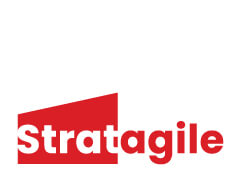The singular measure of success for a demand gen campaign depends upon its achievement of a commendable conversion rate. But planning campaigns to achieve an excellent conversion rate has a science to it.
What is Conversion?
Conversion occurs when a user completes a desired action on a website, online app or any digital platform. Examples include user completing a purchase, user creating a new account, user signing up for a subscription service, user downloading a whitepaper, user carrying out actions like mouse-over, user interacting with a calculator tool or even user watching a video.
Campaigns are All about the User
Contrary to the popular perception, in the age of machines, a user, a human being is at the heart of digital marketing campaigns. He or she may have to prove that he/ she is a human being by undergoing the rite of captcha verification. Nevertheless, digital marketing campaign is all about a user: the one reason it becomes all the more important to know more about the user than; as much as possible about him/ her.
STEP 1: Planning your Campaign
Every digital marketing campaign, big or small, needs to consider the following questions in order to ensure winning:
- What is your target segment?
- Where to find them?
- What is the intended CTA (Call to Action) you are aiming at?
- What are the present actions of your target segment?
- What actions will they take next?
By making sense of past behaviour, marketers can anticipate future action of customers and augment the quality of user experience, significantly.
STEP 2: Customer Segmentation
Once the planning is done, you can move into customer segmentation in a detailed manner. But before launching yourself into it, please note that customer segmentation is preceded by building a customer profile. The best of such profiles would let you connect information across multiple devices and channels pertaining to the customer.
Unique ID for Each and Every Customer
It is important for the customer to have a unique ID which would let you identify him/ her across multiple devices and data sources. It could be one of the following:
- Visitor ID: Known ID for your company for that specific user
- Device ID
- Advertising IDs like the IDFA
- Any of the PII (Personally Identifiable Information) like email, mobile, social handle ID etc., if available.
- Or in many cases data stitching across multiple streams of data sources to ascertain a visitor with proxy parameters without having the real identity in hand.
You can also use first-party cookies and have customers opt in. This is important to avoid having browser restrictions upsetting the apple cart.
Now comes the part of customer segmentation.
Segmentation is all about grouping. When you group customers into specific subgroups based on their respective characteristics which you collect from online or offline data sources, you are into customer segmentation. Specifically, the groups could be constituted based on any of the following: demographic characteristics, engagement characteristics, type of interests they have expressed on their digital trail (“I love sports” or “I am here for food” kind of expressions). Other types of lifestyle and even peripheral demo-geo parameters may fit into this category:
- Location – City, State, Country etc.
- Industry
- Marital status, age group, family size etc.
- Indirect indicators of income like designation, car ownership etc.
The Importance of Customer Segmentation
Why should customer segmentation be done? Why is it important, if at all?
This is because, unless you know your customer segmentation, you will not be in a position to provide the customer with the best possible user experience as you will not be able to personalise your services. And without the same, you will not be able to drive conversions. Imagine you being supplied with poor recommendations on an e-commerce website. (When you shop for toothbrush, it is recommending to you to buy hammers).
It is not only about engaging with a new customer. It is also about keeping customers loyal. Giving them personalised experience tells them that you care about them.
It is the age of machines and technology. It is also the age of empathy.
Personalised customer experience enables and empowers them to really become engaged and help you to retain them longer. It simply extends the customer lifecycle.
Don’t forget: an engaged customer is a happy customer. And happy customers tend to be loyal, help you rake in shekels.
The new PDPA, GDPR and privacy laws limit the collection, storage and usage of many of the traditional personal identifiers in the emerging digital marketing landscape. It’s important for practitioners to have ample knowledge around the legal framework of privacy, data usage and opt-in policies while using personal traits for segmentation and campaign planning.
STEP 3: Tapping into Insightful Data plus Doing Refinements
Imagine you run an ecommerce website. The data tells you that there are a group of females who visit your site every other day and make some purchase or the other. They belong to a certain age group. You also have a segment of women who visit only once in a month and does engage in buying. Your logic will tell you, and rightly so, to target the once-in-a-month visitors with sweetened offers rather than the former category.
This type of customer segmentation would not be possible unless you have two different datasets: data of visits and visitors.
Visit Characteristics:
- When did the segment visit the site?
- What all did they look at?
- Did they spend money?
- How long did they spend time on your website?
In other words, visit characteristics are defined by the visitor’s engagement with the brand or the service.
Visitor Characteristics:
- Who they are?
- What do they do?
- Where are they from?
- Data about customer’s demographics and lifestyle.
Most of the firms have visitation data but lack audience data. Unless you combine visitation data with customer data, it will definitely be difficult for you to target users effectively and efficiently. You may waste precious marketing money on audience who may not be interested in your products or services. Yes, they may have visited your page but that does not nudge them to be a customer of yours.
STEP 4: Tracking Customer Journey and Behaviour
To have insights into customer journey and behaviour, keeping track of engagement patterns are of utmost importance. This constitutes the fourth step.
- When did they purchase something?
- What did they do after making the purchase?
- What were they doing before making the purchase?
- How frequently have they purchased the product?
All these questions continue to stay relevant.
Cohort Analysis
One of the greatest modes of analysis of data is by virtue of cohort analysis.
One can get clear idea of groups and sections of users and assess their retention and loyalty. One can look into the frequency of visits and their purchase patterns as well as likes and dislikes.
Cohort analysis can also help you with churn analysis telling you when a specific type of users is not likely to come back opening up possibilities in terms of remarketing and retargeting.
Challenges in Customer Segmentation
- Companies lack first-party data or;
- Have limited data on customers
- Possess aged or obsolete data
- Lacking in tools to analyse data
- Lacking in resources to interpret data in the best possible way
The set of five challenges could be overcome by ensuring that customer segments are up-to-date, making absolutely sure that one has enough data sourced from first, second or third parties. You also need to have an analytics suite and a group of analysts or data specialists to cash in on the data.
Unless, as a business, you run an authentication mechanism that the user may opt in for when signing up for a service or making a purchase, you will not get primary data on him or her like age, gender, place etc. Or you can let the users subscribe to a value proposition that would enable them to share these data points.
It is also of paramount importance to have data scientists or analysts to deep dive and compile the user data with insights packed into a report. In other words, high level reports may not do the trick.
Pointers for Practitioners
Avoid Over Segmentation
When you carry out customer segmentation, it is possible that you may over segment to the point that you layer on data points after data points to arrive at small and narrow customer segments to be of any effect. Avoid this from happening at all costs.
Campaign Activation
Once you are ready to activate a campaign for any of the customer segments, go for a personalisation engine (eg. Adobe Target), a CMS or Content Management System or an ad server and deliver the ads/ content targeting the segment.
Next, track the performance of the ads/ content utilising analytics: you can look at how well the ads performed with the audience segment you targeted (how the metrics aligned with your KPIs and goals).
Analyse what worked with whom and what did not, and why, if it did not. What products or services did those segments look into? Use the insights to better iterate the campaign. Should they be offered a different line up of products? Think and strategize.
The Don’ts in Campaigns
- Targeting too broad or too narrow an audience
- Serving too many ads to your target audience
- Failing to personalise content
- Not identifying with the fact that post-purchase customer journey is as important as pre-purchase personalisation and allied actions.
- Failing to update or capture customer data, sometimes in real time.

